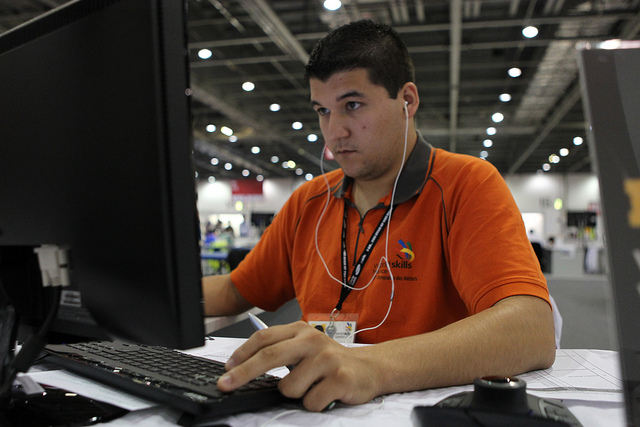A handful of years ago we worked with a local organization to help upgrade a portion of their building’s legacy pneumatic building controls to a modern building management system (BMS). We performed the project work in a partnership with a local controls contractor as well as with the building owner’s local energy efficiency utility (that provided financial support because the work also provided the opportunity to save a large chunk of electrical and gas energy). The project was overall a big success—saving 20% on the owner’s annual electric bill and 10-15% on natural gas.
One challenge of existing building commissioning
One of the challenges in existing building commissioning, or retrocommissioning (RCx) work and associated controls upgrades (and this project was no exception) is that some of the work of routing new control cabling can be tricky—walls are not typically open, wire chases between floors are sometimes available but often not, surface-mounted conduit is aesthetically lacking, and overall the work takes a lot of effort and associated cost. As a way of mitigating some of this cost, the project team decided to use wireless temperature sensors from a reputable commercial manufacturer for several of the zone temperature sensors. This was an economic decision, but also a technically reasonable one—wireless thermostats have been around for a while now, and they have long (multi-year) battery lives.
Mixed wireless temperature sensor performance
Flashing forward to present day—two of the three sensors have worked flawlessly. There has never been a single problem with the zone control related to the loss of wireless connection between these two well-performing zones. The third one—and oddly the sensor closest to its receiver—has been a source of frequent (at least annual, sometimes more) trouble. The connectivity between the control system and the thermostat drops out and the control system, based on freeze protection programming, assumes the worst and concludes the temperature is at 50F and falling fast - causing the system to dump heat into a small space until further notice. The result is that the affected zone gets into the high 80F temperature range until reaching some kind of equilibrium—needless to say this is sub-optimal for people working in the space.
In an attempt to address the issue, the service contractor changed the batteries several times, which seemed to magically resolve the issue for a period. But the problem would recur down the road again several months or a year later.
The space with the problem sensor was directly adjacent to the room with the receiver so the team assumed the problem couldn't be related to wireless signal strength. However when the problem kept occurring, we started to wonder. The wall construction between the adjacent spaces was concrete block, and the doors were heavy steel—neither of which are very friendly to wireless signals. One day we mentioned this to the owner and suggested that the next time the problem occurred that they try simply opening the door between the adjacent rooms and seeing if the connection between the thermostat and control system would be regained—at the next opportunity they did so and the connection problem was resolved instantly. We have recommended that the sensor be hardwired during another phase of RCx work—in hindsight we probably should have gone this route to begin with given the close proximity of the two spaces. Certainly the savings realized in the first costs were lost due to the costs of trying to troubleshoot and resolve the issues—not to mention the costs of uncomfortable occupants.
Wireless sensors versus wired
This experience overall is not an uncommon one—managing wireless connections can be challenging. Sometimes the benefits are worth the associated risks and costs. My continued takeaway on wireless for building controls (and broader) applications is that wireless should be avoided if a good, (or not all that bad) alternative is available to hardwire!
If you start down the road of wireless in your facility, I would recommend pausing and asking the question: are you sure this cannot easily be done with wires? The additional effort upfront may lead to long term operational savings and increased system reliability.




